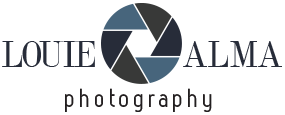I’ve Been Wrong About “Bokeh” All These Years
I was wrong. Bokeh is far more important, useful and beautiful than I’d thought.
Frequent readers may recall that I’ve often written, “…bokeh is overrated.” I was wrong and I’m happy to admit it. What made me turn back from the Darkside? An article I read on Tamron’s website.
Mea Culpa
All single guys have known a friend at work who had an “unattached cousin.” Is she pretty? they’d ask their coworker. The answer was always a guiltless, She has a GREAT personality!
Somewhere along the line, during my 300+ years of experience in the photo industry, my simple little monkey brain equated “sharp” with “pretty” and “bokeh” with “personality.”
Is the lens sharp? Well, it has buttery bokeh. You get the picture, albeit sometimes fuzzy.
Why ? Oh, I could blame insipid TV romcoms, or say that I’d been misled by well-meaning self-proclaimed experts, or even plead insanity. But the truth is this: although I was using bokeh intuitively as a creative tool, I never recognized it as such. I’d leveraged its power without totally understanding its full potential.
It’s not the biggest mistake I’ve made since first taking up a pen for Shutterbug in 2004, but undoubtedly it’s one of the most regrettable.
Then I stumbled across an article that was published on Tamron’s website. The first few paragraphs, including the definition of bokeh, were completely consistent with my understanding of the technical and mechanical aspects of bokeh. So I read on.
Wow. I learned a lot. Next, I went back to a few of my old images and tried to understand the bokeh milieu a bit more deeply.

What is Bokeh?
Here I turn the podium over to Tamron. I cannot write it any clearer or make it more understandable than Tamron wrote it here: How to Create Beautiful Bokeh Effects: Using Bokeh to Capture Stunning Photos.
Tamron’s article explains:
• What bokeh is and how it enhances photo composition and subject focus
• The key camera settings and lens choices that affect bokeh quality
• How to control depth of field using aperture, focal length, and distance
• The different types of bokeh (foreground, background, bokeh circles) and how to use them
• Scene-by-scene techniques for using bokeh in portraits, landscapes, street, and macro photography
Pronunciation
Permit me a personal pet peeve: “bokeh” is pronounced “bow ke” with equal emphasis on the two syllables. The “bow” sound is pronounced like the device used to shoot arrows. The “ke” phoneme is pronounced like the “ke” in “ketchup” or “kettle.” Not “kay” as in the name. It’s definitely not “bow ca” as in Boca Raton. And it’s not the same sound as the word used to describe a bunch of flowers.
Self-Analysis – How I’ve Been Using Bokeh
Here is how I have been using bokeh intuitively; in other words, subconsciously, as a serendipitous accident. Coulda done better if I’d knowed what I was a doin’.
Subject Isolation
Separate the subject from the background – that’s the mantra of portrait photographers. In this shot I successfully subdued all background distractions. Didn’t think of it as bokeh at the time.

Emphasize Sharpness
Here the bee is sharp, but appears even sharper against a completely out-of-focus background and foreground.

Shift Center of Interest
The real story is the arrangement of red berries in the back. Making them indistinct makes them even more interesting.

Establish Location
Clearly in an urban environment, the veteran pigeon stands proudly on a public street in foul weather. (Fowl weather?) The buildings are not sharp but they’re unmistakably big-city buildings. To me the backdrop says, “city city city.”

Create Abstractions
Although this IR (Infrared) image is already complex, the bokeh lends substantial texture and abstraction to the context.

Lead the Viewer’s Eye
The wavy branches in the backdrop practically force viewers to follow the branch to the singular red leaf.

Key Design Element
Here, the cone flower is just another cone flower, but the bubbles behind it are the vital design elements.

Basic Guide to Capturing Photos with Creamy Bokeh (VIDEO)
Tamron Reinvents the Zoom-to-300mm Category with New 6X Zoom that Starts at 50mm
REVIEW: Tamron’s Amazing 90mm f/2.8 Di III Macro
Tamron Redefines Versatility: New 50-400mm Lens Zooms From 50mm “Normal,” Focuses to 9.8 Inches
Latest Tamron Zoom Creates New Genre: Ultra-Wide Closeup Photography
What’s a “Normal” Lens? And Why Is My 18mm Lens “Equivalent” to a 28mm?

Creative Resources
Photographers, both amateurs and pros, are a lucky bunch. We have tons of valuable resources a button press away. Much of the content is hosted by camera, lens and accessory manufacturers. Tamron is a leader in this category.
Tamron’s FREE Photo Master Class series at Tamron University is a collection of educational lessons led by renowned professional photographers.
Check out Tamron’s Blog and sign up for Tamron’s newsletter. You can also register your lenses and find out if you qualify for Tamron VIP Club membership. If you’d like to handle a Tamron lens or consider buying one, click the official Tamron Dealer Locator.
—Jon Sienkiewicz






